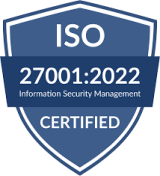Bank Rules serve as a predefined set of conditions within Tyms , enabling users to effortlessly categorize transactions. These criteria can be created by users on the Tyms. Once met, these conditions facilitate the automatic assignment of customers, categories, and transaction types to statements that have been pulled from banks.
Here is a brief guide on how to create bank rules for automatic record-keeping on Tyms web application.
To set up bank rules, follow these steps:
1. Switch to the bank rules tab and click on “New” and a form will open to you.
2. Enter the following information:
a. Rule title: This is the title of the bank rule, preferably a name to capture the intent of the rule. Ex: Salary detector rule.
b. Cashflow: This is the form of cash flow, either coming in (inflow) or going out (outflow).
c. Conditions to be true: This is either any or all. "Any" means that if at least one of the conditions is met, the rule will take effect. This is useful when you want to capture transactions that meet any of the specified criteria. "All" means that all conditions must be met for the rule to take effect. This is useful when you want to capture transactions that meet a specific combination of criteria.
Example:
If you set up a rule with two conditions: "Amount > $100" and "Description = John Doe", and you choose "Any", the rule will apply to any transaction that is either over $100 or contains description [John Doe].
Alternatively, If you choose "All", the rule will only apply to transactions that are both over $100 and contain narration [John Doe].
3. Set up the conditions the rule would look out for by selecting from the following:
a. Type: This refers to the type of data that the rule will look for in a transaction, such as:
Description (e.g., transaction description or notes)
Amount (e.g., transaction value)
Reference (e.g., transaction ID or invoice number)
b. Condition: This defines the relationship between the Type and the Value, such as:
Contains (e.g., the description contains a specific keyword)
Is exactly (e.g., the amount is exactly $100)
Greater than (e.g., the amount is greater than $100)
Less than (e.g., the amount is less than $100)
Contains an invoice number (e.g., the reference field contains a specific invoice number)
c. Value: This is the specific value that the rule will look for in the transaction data, based on the Type and Condition. For example:
If the Type is "Description" and the Condition is "Contains", the Value might be a specific keyword like "Rent payment".
If the Type is "Amount" and the Condition is "Greater than", the Value might be a specific amount like $100.
d. Destination where the transaction which has passed these conditions would be posted to: Ex: Sales, Expenses, Journals.
e. Account: This is the specific account within the Destination category where the transaction will be categorized, such as: Revenue > Sales, Expenses > Rent.
f. Select the desired options to:
Keep bank narration: Preserve the transaction description or notes.
Auto-approve posting when recognized: Automatically post transactions that meet the bank rule conditions.
If you don't select auto-approve posting, transactions will be marked as "Recognized" in Tyms, indicating that a matching account has been found. You can then manually approve or reject these transactions before they are posted.
By setting up bank rules on Tyms, you can streamline transaction management, enabling automatic import, identification, and posting of transactions to relevant accounts, thereby eliminating manual categorization tasks and increasing efficiency.


